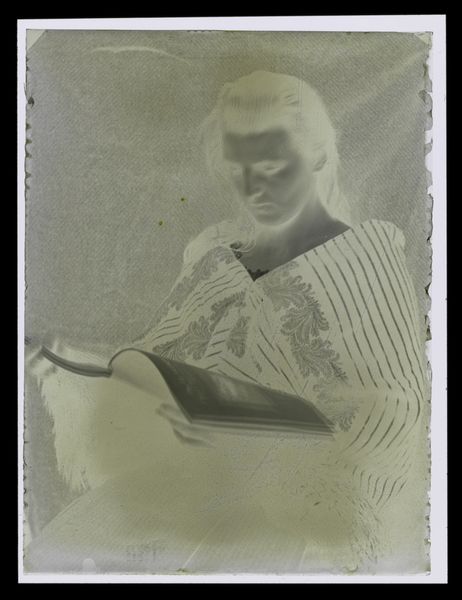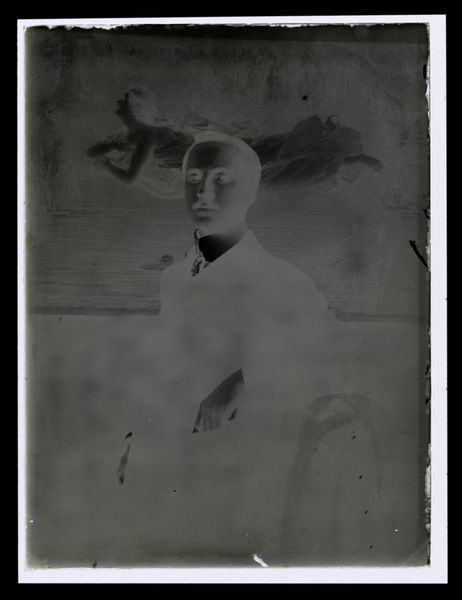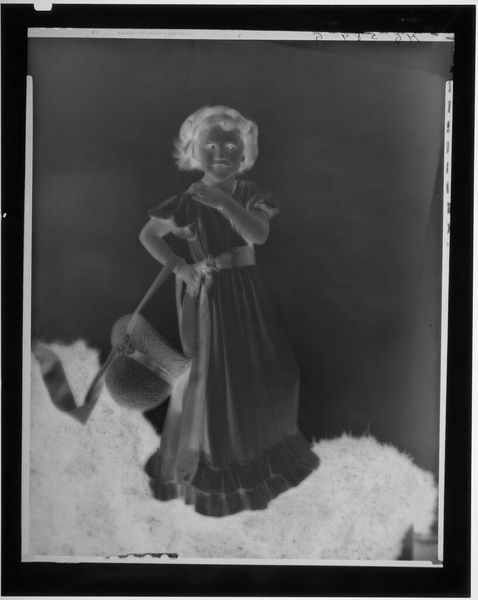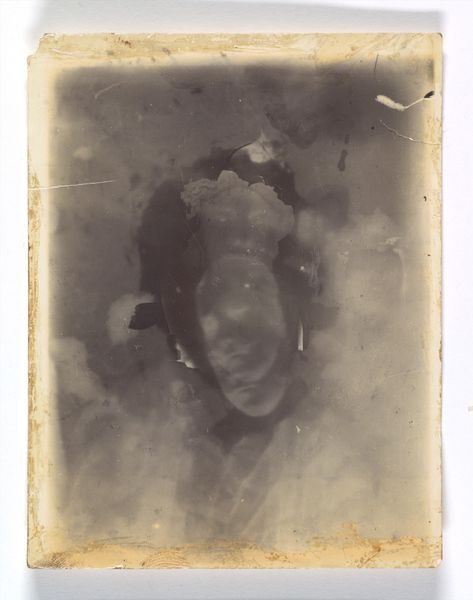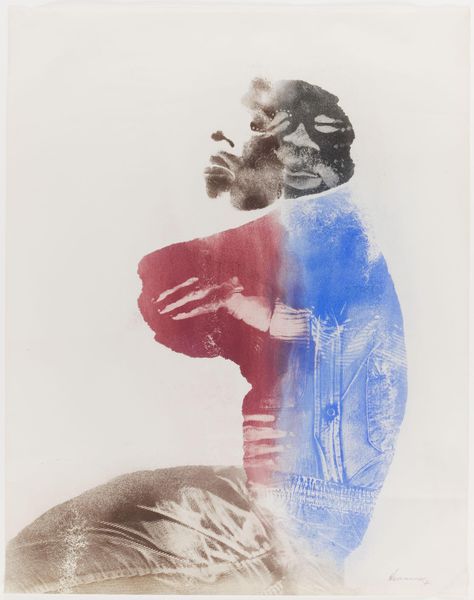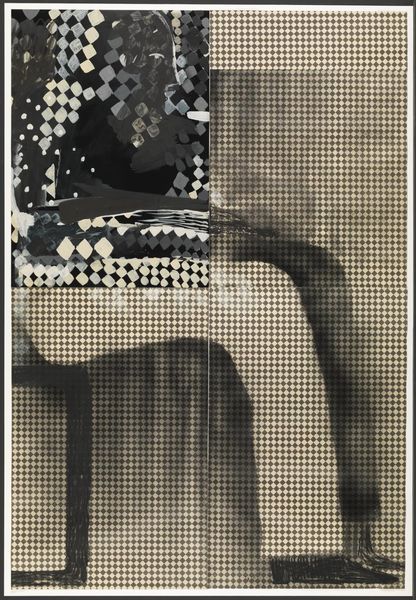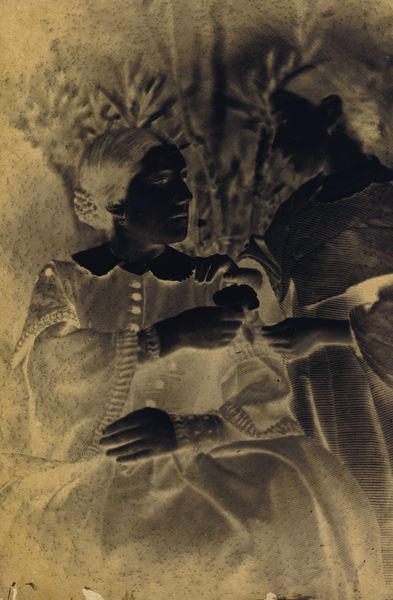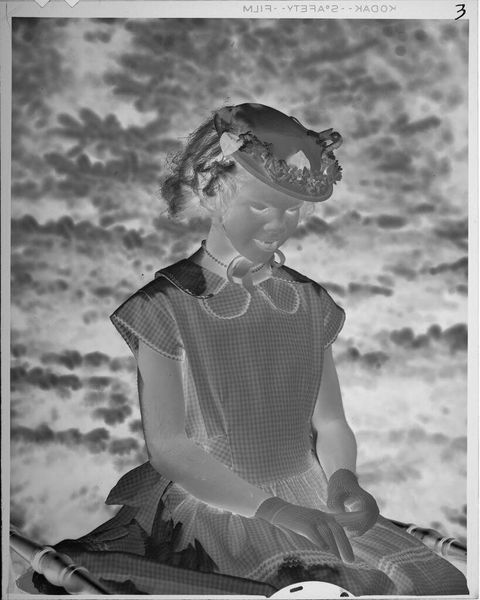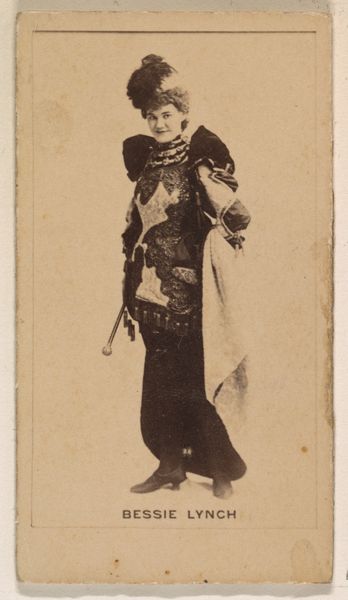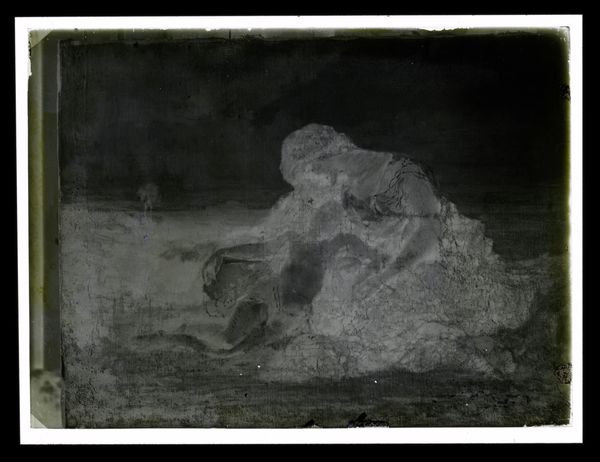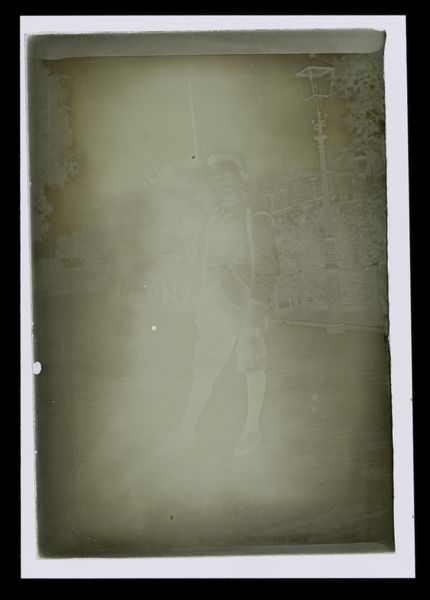
#
goth
#
sculpture
#
grungy
#
derelict
#
neo expressionist
#
sculpting
#
abstract composition
#
graveyard
#
expressionist
#
ruin
Dimensions: height 160 mm, width 120 mm
Copyright: Rijks Museum: Open Domain
Curator: Looking at this spectral image, my initial feeling is one of faded memory. It evokes a haunting quality. Editor: I agree. This is "Portrait of an Unknown Young Woman," dating roughly between 1865 and 1900, by Laurens Lodewijk Kleijn. It’s striking how the photographic process of the time lends such a melancholic air. Think about the era this was produced; photography was evolving into something quite different than painting. Curator: Exactly, and the symbolic weight of portraiture shifted then. Consider her gaze, downcast, almost evasive. The image holds back as much as it reveals. Is that posture resignation or resistance? I wonder what personal story that posture represents. Editor: Or societal story? It’s intriguing to consider what this woman’s position might have been in a society that was rapidly industrializing. What sort of messages was she expected to carry? What was she wearing? What was this form of photograph expected to deliver? Curator: Indeed! The elaborate attire—the layering of fabric, the ornamentation. Clothes as identity. I wonder how much agency she had in the creation of this image. What emotions can clothing convey as symbol, how it becomes a visual shorthand of cultural memory, encoding everything from class to social standing. Editor: This image makes me consider the performance of the sitter, her active participation in manufacturing her image. Was photography empowering or further binding social expectations? That negative expression becomes more complex when seen in this light. I am always interested in exploring how photographs served in shaping public and private identity during periods of transition and how social mores affected private expression and emotional display. Curator: Well said. This photograph truly offers so much for those of us drawn to deciphering visual symbolism! Editor: Absolutely, and it provokes valuable consideration regarding art's complex relationship to the unfolding narrative of the 19th century.
Comments
No comments
Be the first to comment and join the conversation on the ultimate creative platform.
